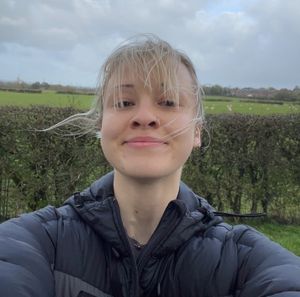Social media can be a fickle beast, especially if it’s not second nature to you and your team. But it can be a powerful tool for marketing your product launches.
Today we’re diving into six examples of social media marketing for new product and feature launches that you can learn from. It’s time to get inspired, let’s get into it. 👇
One: Apple
First up from Apple, we have this adorable video of ducklings swimming in a bathtub. Cute animals are always popular on the internet, so we’re off to a strong start.
But this post is clever for more than just the people pleasing content. It’s one in a series that shares videos and photos taken by iPhone users. Apple centers their users and their experiences with this content, putting the focus on what you would get out of their products.
The posts are all different, ducks having a bath, surfing, lizards, beaches. But there’s a common thread. All of the images showcase an evocative, unusual experience that the audience might want for themselves and they show off an aspect of the iPhone’s camera capabilities.
The video of the cute ducks is a hook, but once you click on the post it’s followed up with strong customer-led storytelling that emphasizes the features of the product. It’s a slam dunk.
(P.s. here’s the link to the full duck video, enjoy. 🐥)
Two: UpCircle
Next up we have UpCircle, a sustainable skincare brand from the UK. UpCircle started out with one exfoliator, but have now branched out to a larger range of products. And heading into 2023, they announced they’re going to be launching their first ever hair care range.
But how they did it is pretty unique.
The company released a limited edition ‘12 Days of Beauty’ advent calendar in the lead up to the holidays, and made it clear only a small run of the product was being produced. Much like big name beauty brands (i.e. L’Oreal or Chanel), behind every door was a mini version of a product.
But here’s the twist, every product in the calendar was unreleased.
Buying the calendar meant exclusive access to yet-to-launch products that’ll be coming out in the next year. So, where does social media come in?
UpCircle posted POV (point of view) videos of customers opening their advent calendars and using the new products. This meant the customers which didn’t get their hands on the limited edition minis were still drawn into the campaign.
The brand's social media audience were asked to guess what the new products might be, what ingredients they might contain, and so on. So not only was this a creative way to announce new products, the exclusivity of the samples and the interactive guessing game UpCircle curated got their audience engaged and eager for the upcoming launches.
UpCircle, take a bow.
Three: Lucy and Yak
This probably isn’t the first time Lucy and Yak has appeared on the blog. And it won’t be the last; their social media marketing is some of the best I’ve seen. If you want a masterclass in brand positioning, they’re a Grade A example, but that’s a topic for another day.
Today, we’re looking at how they launched their new clothing lines for the New Year.
Hidden within this wordsearch are the names of the new clothing prints coming to the site in 2023.
Simple. Creative. Effective.
This post engages the audience, generates hype for upcoming products and stands out amongst the quagmire of corporate branding. You can’t argue with nearly 10,000 likes. With this kind of creativity, you’ll never go wrong.
Four: Semrush
If you’re looking for a more SaaS based example, we’ve got you covered.
With Semrush we’re looking at a more prolonged social media series introducing their #mylifemyterms campaign. We’re seeing a big increase in companies starting socially conscious and people focused campaigns to better connect with their customers.
In line with this, the Semrush campaign is all about how their tools can help you save time in your 9 til 5, so you can have more freedom outside of work. It plays into ongoing wellbeing trends and the movement away from hustle culture we’ve seen since the pandemic.
What’s interesting about how they’ve used the social media here is that information about the campaign is drip fed one post at a time. So, to find out more information you have to keep coming back. And when you look at the overall feed, the individual posts spell out a message.
It’s interactive, it’s visually interesting, it’s relevant. It’s a strong campaign.
Five: Zoom
The world of work is increasingly dependent on technology - but we know all too well that it's not always easy to navigate. It’s rare to go a week without a glitch in a Zoom or Teams meeting. Different teams on different meeting links? The CEO’s accidentally muted themself? You can hear a guy from sales talking about his weekend cause he didn’t mute himself?
We’ve all been there.
But Zoom have cleverly played up to the fact their users often struggle with their tools.
On Zoom’s social media pages, you’ll find introductions to new features or products with animated videos that quickly and smoothly run users through the steps of setting said feature up, overlaid with pop up messages of feature benefits.
The videos are short and sweet, user friendly, and demonstrate a clear understanding of the company’s users and their needs. It’s not the flashiest social media in the world, sure, but these videos are an engaging way of rolling out updates and answering how-to questions about them.
And when you’re a software company that’s making regular (i.e. probably kinda boring) updates while working with a customer base that isn’t always pro-tech, that’s a win.
Six: Google
Alas, we can’t do a blog about social media marketing without talking about Reels. Currently the favorite of the Instagram algorithm, producing reels is one of the best ways to get your content organically promoted on the app.
The catch is that Reels take more thought and effort to produce than a standard post because they pretty much have to be curated video content. But here’s a Reel from Google for inspiration which hits the nail on the head:
In this Reel, the features of the Google Pixel’s camera are highlighted. It’s similar to the post from Apple we started with, but they’ve layered the controls from a Pixel’s video screen over the footage to demo different tools you can use in real time.
This Reel wouldn’t take much more effort than a regular post, you can get the layered effect by screen recording while you film. It’s a creative idea, fairly easy to produce compared to a lot of Reel content that’s out there, and benefitting from its acquiescence to the Instagram algorithm. It’s not necessarily as media savvy as some of the other brands we’ve covered, but it’s ticking a lot of boxes.
So, what’s the verdict?
Hopefully what we’ve been over today has sparked some creativity for your next social posts. But more importantly, you should be able to see that when you break it down, social media has a lot in common with traditional marketing.
You want content that’s engaging, customer focused, and that looks professional. And when you think about it like that, it’s not so scary. It’s what you do every day.


